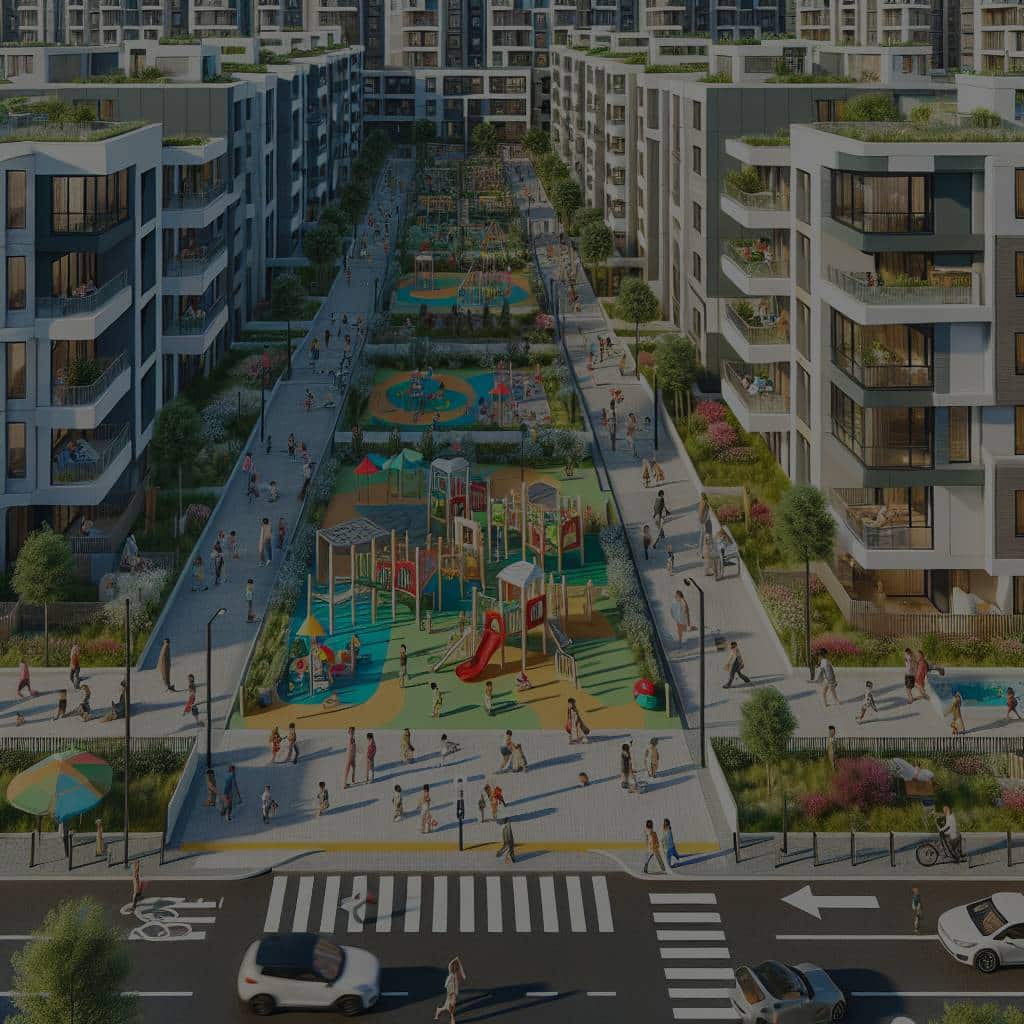How to Create Child-Friendly Environments in High-Density Urban Developments?

In the ceaseless urbanization of modern cities, an issue that frequently goes unnoticed is how to create child-friendly environments in these high-density areas. The current city landscapes often prioritize businesses and adults, leaving children and their needs as secondary considerations. This article aims to address this gap and provide valuable insights on how to incorporate child-friendly designs and spaces in urban developments. The focal points for this discussion include the impact of the environment on a child’s development, the power of play and learning in a child’s life, the role of parents in creating these spaces, and how technology, particularly Google Scholar and Crossref, can assist in this endeavor.
The Role of the Urban Environment in a Child’s Development
Urban environments can significantly impact a child’s development. This development isn’t just restricted to physical growth, but also encompasses the social, intellectual, and emotional domains. Cities often provide a rich tapestry of experiences and stimuli that can positively influence a child’s development. However, these spaces can often be chaotic and unfriendly, causing undue stress and anxiety in children.
A lire également : What Are the Economic Benefits of Investing in Brownfield Site Redevelopment?
It is essential to design urban areas in a way that nurtures a child’s development rather than impede it. This requires a careful review of the existing city structures and implementing changes that make these spaces more child-friendly. These could include creating green play areas, reducing traffic in residential zones, providing safe pedestrian crossings, offering quiet zones for relaxation and study, and developing community centers that encourage social interaction.
The Power of Play and Learning in a Child’s Life
Play is a critical aspect of a child’s life. Through play, children learn invaluable skills like problem-solving, creativity, teamwork, and resilience. High-density urban areas often lack sufficient safe and accessible play spaces, depriving children of these essential learning experiences.
Lire également : How to Tackle the Challenge of Providing High-Quality Affordable Housing in Rural Areas?
Cities should strive to incorporate more open spaces where children can play freely. These spaces should be designed to cater to various forms of play – physical games, quiet reading corners, imaginative play zones, and areas for socialization. Additionally, these spaces should be easily accessible to ensure maximum usage.
Moreover, the importance of learning cannot be overstated. Cities should provide spaces that facilitate learning outside the formal setting of schools. These could include public libraries, museums, art galleries, and science centers. Parents and educators can also use online platforms like Google Scholar and Crossref to access a vast array of learning resources.
The Role of Parents in Creating Child-Friendly Urban Spaces
Parents play a crucial role in shaping child-friendly urban spaces. It is often the parents who first identify the need for these spaces and champion their creation and maintenance. Parents understand their children’s needs and are best placed to advocate for suitable urban designs.
Parents can collaborate with city planners and local community leaders to push for changes. This could include advocating for better pedestrian infrastructure, campaigning for more green spaces, or rallying for safer play areas. They can also contribute by actively participating in the maintenance and upkeep of these spaces.
The Use of Technology in Designing Child-Friendly Urban Spaces
Technology has a significant role to play in designing child-friendly urban spaces. Platforms like Google Scholar and Crossref offer a wealth of research papers and articles that can inform the design process. These platforms provide insights on the best practices from around the world, offering valuable lessons that can be applied locally.
On the other hand, digital tools and apps can be used to engage the children and make the spaces more attractive to them. For instance, augmented reality games can be integrated into play spaces to provide a more immersive and engaging experience. Technology can also provide parents with valuable data about the safety and usage of these spaces, helping them make informed decisions.
Creating child-friendly urban spaces is a complex but worthwhile endeavor. It requires a careful review of the existing infrastructure, a deep understanding of children’s needs, active participation from parents and community leaders, and effective use of technology. By ensuring that our cities are child-friendly, we invest in our children’s future and, by extension, the future of our cities.
Building Child-Friendly Spaces Amidst the High Density and the COVID Pandemic
The challenge of creating child-friendly spaces in urban areas has been further complicated by the COVID pandemic. The risk of infection has necessitated a rethinking of how we design and use our cities. The need for social distancing and reduced physical contact has highlighted the importance of open spaces and outdoor play in ensuring that children can still interact, play and learn safely.
In these challenging times, creating child-friendly cities requires innovative and flexible approaches. This could involve repurposing underutilized spaces like rooftops, parking lots, and alleyways into play spaces. It also means prioritizing green spaces and natural elements in urban design to allow children to interact with nature, an important aspect of their cognitive and emotional development.
High rise buildings can also be designed or adapted to include communal play areas. For instance, shared rooftops can be transformed into green playgrounds or learning hubs. Architects like Natalia Krysiak have demonstrated this potential through their innovative designs that integrate child-friendly elements into high-density urban housing.
However, it is important to ensure that these spaces are safe and accessible, especially amidst the COVID pandemic. This could involve measures such as regular sanitization, proper physical distancing markers, and effective crowd management systems.
Conclusion: Towards Child-Friendly Cities
In conclusion, creating child-friendly environments in high-density urban developments is both an opportunity and a challenge. It is an opportunity to reimagine our cities and design them in a way that caters to all their inhabitants, including our youngest. It is a challenge because it requires us to overcome numerous physical, social, and institutional barriers.
At the heart of these efforts should be a simple yet profound principle – children have the same right to the city as adults do. They too deserve spaces where they can play, learn, socialize, and grow. By prioritizing child-friendly design in our urban planning processes, we not only create cities that are more livable for children but also for families, the elderly, and indeed, everyone.
The journey towards child-friendly cities requires the active participation of all stakeholders – architects, urban planners, policymakers, parents, and the children themselves. It also benefits from the wealth of knowledge and best practices available on platforms like Google Scholar and Crossref.
While the task might seem daunting, especially amidst the high density and the COVID pandemic, it is worth remembering that every step we take in the right direction counts. Every green space we create, every safe play area we build, every car-free street we designate, is a victory for children and a step towards a more child-friendly city.
